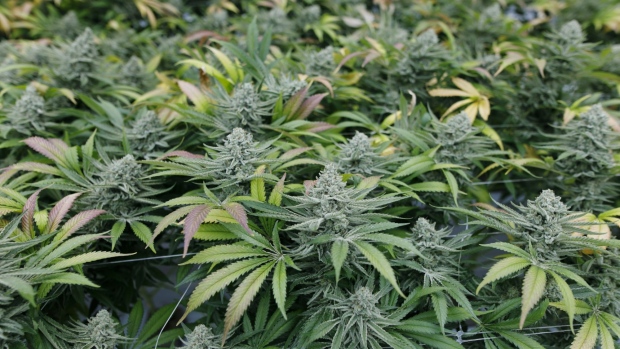Canada: Illicit pot still dominates after two legal years

It’s been nearly two years since Canada became the first G20 country to legalize cannabis for recreational purposes. However, the majority of customers are still getting their pot from the illicit market -- with a lot of ground left to cover.
In the fourth quarter of 2018, legal marijuana represented only 21 per cent of total consumption in Canada, despite weed becoming lawful on Oct. 17 of that year. Fast-forward to the first quarter of 2020 and cannabis is now a $2.2 billion retail industry, yet legal consumption is still just 46 per cent of the total, according to data from Statistics Canada.
“Consumer conversion from the illicit market is clearly occurring, but it is still early days,” Cormark Securities analyst Jesse Pytlak said in an email. “Retail infrastructure is still being developed, and useful insight on consumer preferences and behaviors is just now beginning to emerge.”
The relatively slow growth can be attributed to both steep prices in the legal market, as well as the fact that physical stores remain few and far between in large provinces like Ontario. The accessibility of brick-and-mortar storefronts is critical for converting consumers from illegal consumption, Pytlak added.
“The pricing is still way too high relative to what we’re seeing in the illicit market,” Canaccord Genuity analyst Matt Bottomley said in an interview. “If you are someone that consumes cannabis on a regular interval, there’s not a lot of incentive for you to transition over.”
However, legal consumption is expected to grow exponentially, especially as edibles -- which only arrived on the legal market in late 2019 -- become more popular. “Those are products that make up right now about 15 per cent of industry sales,” Bottomley said. “If you look at any legal market, that number’s at least 50 per cent, so there’s a lot more growth expected in these types of derivative products.”
COVID-19 outlook
Although the outbreak of the coronavirus earlier this year may have dampened in-person sales, it didn’t necessarily hurt the overall industry -- in fact, according to Bottomley, it could have even contributed to a bump in revenue for retailers.
“When COVID-19 first started in the form of people staying at home, from mid-March to April, that was actually some of the highest cannabis sales globally,” he said. “There’s still a bunch of potential consumers sitting on the sidelines.”
If anything, Pytlak added, the pandemic has shown the sector to be stronger than expected. “The resiliency in demand for cannabis validates cannabis’ status as a recession-proof defensive industry,” he said.
420 Intel is Your Source for Marijuana News
420 Intel Canada is your leading news source for the Canadian cannabis industry. Get the latest updates on Canadian cannabis stocks and developments on how Canada continues to be a major player in the worldwide recreational and medical cannabis industry.
420 Intel Canada is the Canadian Industry news outlet that will keep you updated on how these Canadian developments in recreational and medical marijuana will impact the country and the world. Our commitment is to bring you the most important cannabis news stories from across Canada every day of the week.
Marijuana industry news is a constant endeavor with new developments each day. For marijuana news across the True North, 420 Intel Canada promises to bring you quality, Canadian, cannabis industry news.
You can get 420 Intel news delivered directly to your inbox by signing up for our daily marijuana news, ensuring you’re always kept up to date on the ever-changing cannabis industry. To stay even better informed about marijuana legalization news follow us on Twitter, Facebook and LinkedIn.




